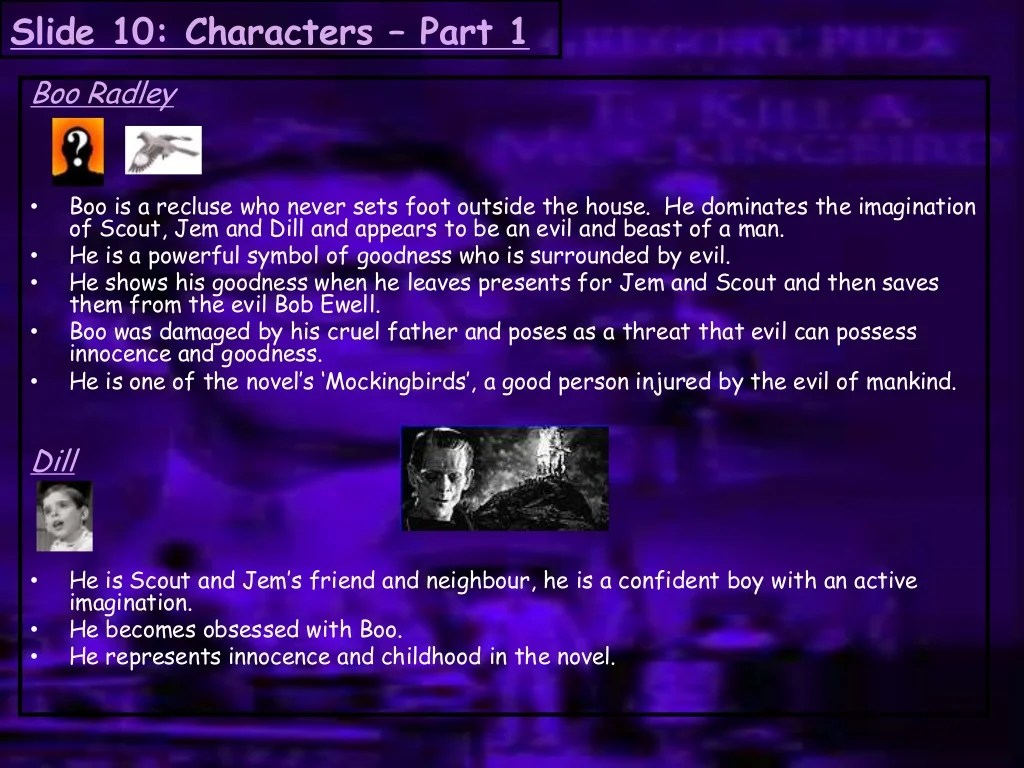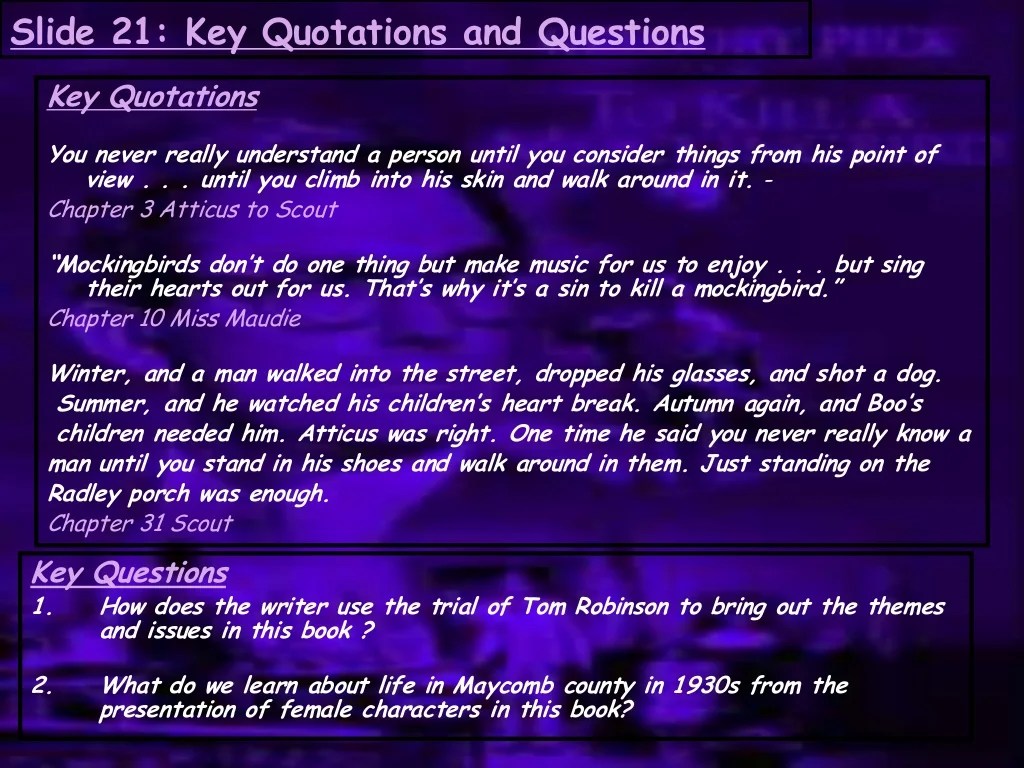To Kill a Mockingbird Final Exam delves into the complexities of Harper Lee’s timeless masterpiece, examining its characters, themes, and literary techniques with meticulous detail.
This comprehensive examination will guide students through the novel’s rich tapestry, exploring the motivations of Atticus Finch, the growth of Scout Finch, and the enigmatic role of Boo Radley.
Character Analysis
Harper Lee’s To Kill a Mockingbirdfeatures a complex cast of characters who embody the social and moral struggles of the American South in the 1930s. Among the most notable characters are Atticus Finch, Scout Finch, and Boo Radley.
Atticus Finch
Atticus Finch is a prominent lawyer and the father of Scout and Jem Finch. He is known for his integrity, compassion, and unwavering belief in justice. Despite the prevailing racial prejudice of the time, Atticus courageously defends Tom Robinson, a black man falsely accused of raping a white woman.
Scout Finch
Scout Finch is the novel’s protagonist and narrator. As a young girl, she is initially tomboyish and rebellious but gradually develops a deeper understanding of the world around her. Through her experiences, she learns the importance of empathy, tolerance, and standing up for what is right.
Boo Radley, To kill a mockingbird final exam
Boo Radley is a mysterious and enigmatic neighbor of the Finch family. Initially perceived as a fearsome monster, Boo is later revealed to be a kind and gentle soul who has been isolated from society due to his physical deformities.
He plays a crucial role in protecting Scout and Jem from danger.
Themes and Symbolism
To Kill a Mockingbirdexplores several important themes, including racial prejudice, childhood innocence, and the importance of empathy. The novel also employs a range of symbols to convey its themes and enhance its narrative impact.
Racial Prejudice
The novel exposes the deep-seated racial prejudice that permeated Southern society during the 1930s. Through the trial of Tom Robinson, Lee demonstrates the injustice and hypocrisy of the Jim Crow system and its devastating impact on individuals and communities.
Childhood Innocence
The novel also explores the loss of childhood innocence as Scout and Jem witness the harsh realities of adult life. The trial of Tom Robinson forces them to confront the evils of racism and the fragility of justice.
Mockingbird Symbolism
The mockingbird is a central symbol in the novel. It represents the innocent victims of prejudice, such as Tom Robinson and Boo Radley. Killing a mockingbird is considered a sin, reflecting the novel’s condemnation of violence and hatred.
Social and Historical Context
To Kill a Mockingbirdis set in the American South during the Great Depression, a period of economic and social upheaval. The novel reflects the social and cultural norms of the time, including the deep-rooted racial divide and the widespread poverty and unemployment.
Historical Overview
The novel is set in the fictional town of Maycomb, Alabama, during the 1930s. The Great Depression had a devastating impact on the American South, leading to widespread unemployment and poverty. The novel reflects the social and economic struggles of the time.
Social and Cultural Norms
The American South during the 1930s was characterized by strict social and cultural norms. Racial segregation was prevalent, and African Americans faced discrimination and violence. The novel explores the impact of these norms on the characters and community.
Great Depression Impact
The Great Depression had a significant impact on the characters and community in To Kill a Mockingbird. Many families struggled to make ends meet, and the Finch family was no exception. The novel explores the challenges and hardships faced by individuals and communities during this difficult period.
Literary Techniques and Style

Harper Lee employs a range of literary techniques and stylistic devices to create a compelling and evocative narrative. The novel’s unique narrative style, use of foreshadowing, and vivid imagery contribute to its enduring impact on readers.
Narrative Style
To Kill a Mockingbirdis narrated from the perspective of Scout Finch, a young girl who experiences the events of the novel firsthand. This first-person narrative style allows the reader to experience the events through the eyes of a child, adding a sense of innocence and immediacy to the story.
Foreshadowing
Lee skillfully uses foreshadowing to hint at future events and create suspense. For example, the novel’s opening chapter foreshadows the trial of Tom Robinson and the tragic events that will unfold.
Imagery
Lee’s use of vivid imagery creates a strong sense of place and atmosphere. The descriptions of Maycomb, Alabama, and its inhabitants bring the novel’s setting to life and enhance the reader’s immersion in the story.
Critical Reception and Legacy

To Kill a Mockingbirdhas received critical acclaim since its publication in 1960. The novel has been praised for its powerful themes, unforgettable characters, and evocative writing style.
Critical Reception
Upon its release, To Kill a Mockingbirdreceived widespread critical acclaim. Critics praised the novel’s mature themes, well-developed characters, and skillful use of language.
Enduring Popularity
To Kill a Mockingbirdhas remained popular with readers for over six decades. The novel is widely taught in schools and has been adapted into several films and stage productions.
Legacy
To Kill a Mockingbirdis considered a classic of American literature. The novel’s exploration of racial prejudice and its timeless themes continue to resonate with readers today.
FAQ Insights: To Kill A Mockingbird Final Exam
What are the key themes explored in To Kill a Mockingbird?
The novel delves into themes of racial prejudice, social inequality, and the importance of empathy and justice.
How does Harper Lee use symbolism in the novel?
The mockingbird symbolizes innocence, vulnerability, and the destruction of beauty by prejudice.
What is the significance of the setting in To Kill a Mockingbird?
The novel’s setting in the American South during the 1930s provides a backdrop for exploring racial tensions and social injustice.
